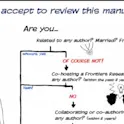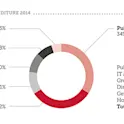
Open science and peer review
24 Dec 2015
Article Processing Charges: Open Access could save global research
The total number of peer-reviewed research articles published each year increases by approximately 4% [Scopus]. In 2014, nearly 400,000 published research articles were Gold open-access papers. This results in approximately 20% of all research articles — and the number is growing at an astonishing rate of 20% per year (Lewis, 2013). If the rate continues, open-access papers will exceed subscription papers in just a few years from now. This, and similar observations, have led some commentators to predict that traditional subscription journals will soon be a thing of the past (Lewis, 2012). But is this a credible prediction? Is open access capable of disrupting the entire scholarly publishing industry? Can it replace traditional publishing or force it to adopt new business models? The answers depend on whether open access satisfies two fundamental criteria for disruption: an increase in efficiency and a decrease in costs. The new generation of open-access publishers are “born digital” which is undoubtedly far more efficient, but how much will universities, institutes and scientists save by switching to open access ? Brief history of the evolution of open access From the 1950s to the 1990s, nearly all scientific papers were published in subscription journals that were paid for by individual readers or […]













